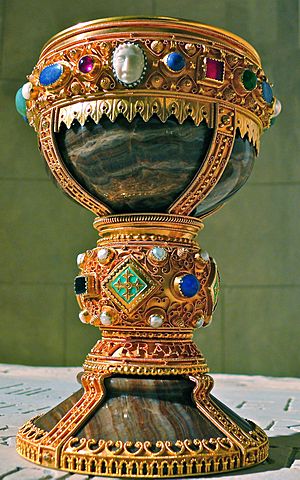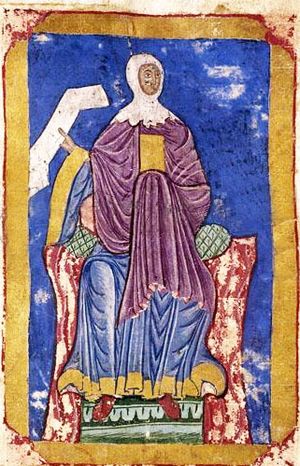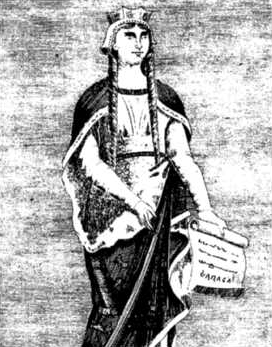Urraca of Zamora facts for kids
Urraca of Zamora (born around 1033 or 1034, died around 1101 or 1103) was a princess from the Kingdom of León. She was one of the five children of King Ferdinand I the Great. Urraca received the city of Zamora as her special gift from her father. She had a lot of power there, like a ruler. Her story became famous in old poems and books, like the Cantar de Mio Cid.
Contents
Family and Inheritance

Before King Ferdinand I died in 1065, he split his large kingdom among his five children. He told them to live in peace. His oldest son, Sancho II, got Castile. His second son, Alfonso VI, received León. His youngest son, García II, got Galicia.
His daughters also received cities. Elvira received Toro, and Urraca received Zamora. Each child was meant to rule their part of the kingdom.
A Brother's Ambition
Sancho, the oldest brother, wanted to rule the entire kingdom. He started wars against his siblings. By 1072, Sancho had defeated his brother García. He also forced his brother Alfonso to run away to Toledo, a city ruled by the Moors.
Sancho then easily took Toro, his sister Elvira's city. But when he tried to take Urraca's city of Zamora, he faced a strong defense. The siege of Zamora lasted a long time.
Sancho's Death
During the siege of Zamora, King Sancho was mysteriously killed on October 7, 1072. Many people thought that Alfonso and Urraca might have been involved. An old story, the Chronicle of the Cid, says that a nobleman from Zamora killed Sancho. This nobleman then found safety inside Zamora.
The story does not directly blame Alfonso or Urraca. It also says that the famous knight the Cid was forced to be at the siege by King Sancho.
Alfonso Becomes King
After Sancho's death, the nobles from Castile were very suspicious of both Urraca and Alfonso. They kept the siege of Zamora going for a while. But without King Sancho, the siege did not make sense anymore.
According to the old stories, the question of Zamora's guilt was decided by a special fight called a "trial by combat." This fight did not clearly show who was right. Urraca then called the nobles from Sancho's lands. Alfonso was finally accepted as the new king of both Castile and León.
However, suspicion remained. Led by the Cid and other nobles, they made Alfonso swear publicly that he was innocent. He did this in front of St. Gadea's Church in Burgos. This event caused King Alfonso to dislike the Cid later on.
Later Life and Death
In her older years, Urraca slowly stopped her duties as a ruler. She eventually went to live in a monastery in León. People believe she died there around 1101. However, a document from 1103 shows she made a gift, so she might have died a few months or years later.
Urraca is buried in the Chapel of the Kings at the Basilica of San Isidoro in León. Her siblings Elvira and García are also buried there.
Urraca in Stories and Movies
In old poems and legends, Urraca is often shown as a princess who was treated unfairly. She watches Sancho and the Cid take over her lands from her castle walls. This happens just before Sancho is killed. In these stories, her brother Alfonso is her loyal and brave protector.
The 1961 Hollywood movie El Cid also tells Urraca's story. It mostly follows the old tales. The movie adds that Urraca was a woman who felt rejected by the Cid. She then plotted against him. However, the movie leaves out that Urraca and Rodrigo (the Cid) grew up together as close friends in Zamora.
Later in the movie, after Sancho dies, Urraca tries to get Alfonso to make up for her problems with the Cid. For some reason, the movie incorrectly shows Urraca as the ruler of Calahorra, not Zamora. The French actress Geneviève Page played Urraca in the film.
See also
In Spanish: Urraca de Zamora para niños



